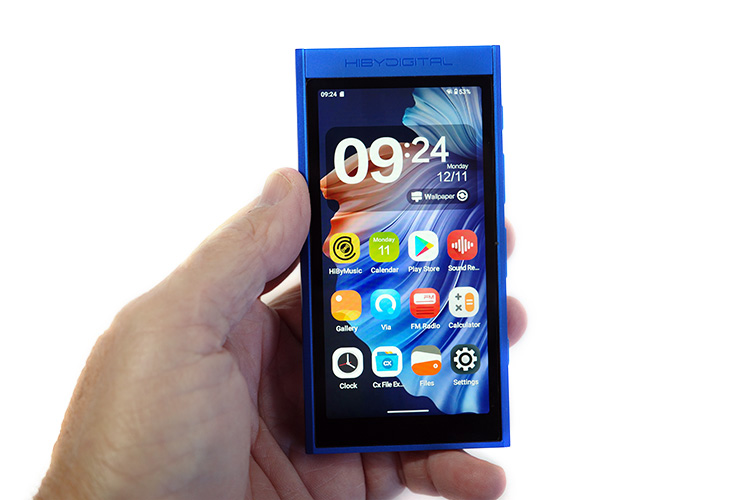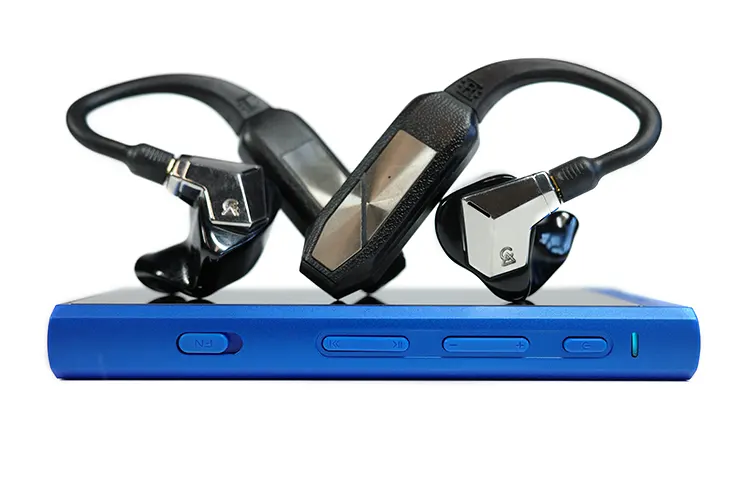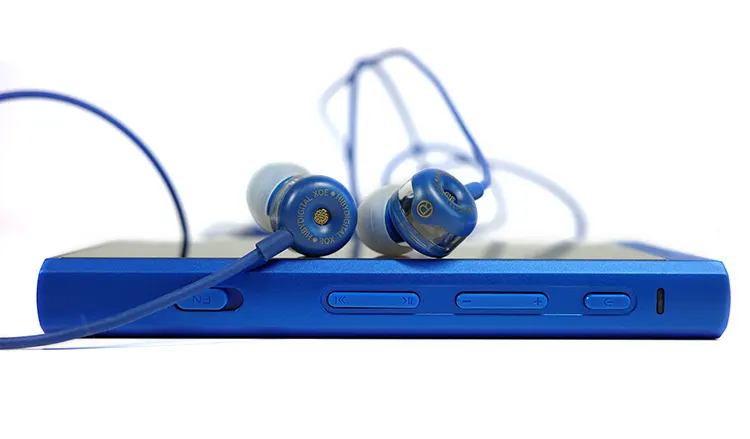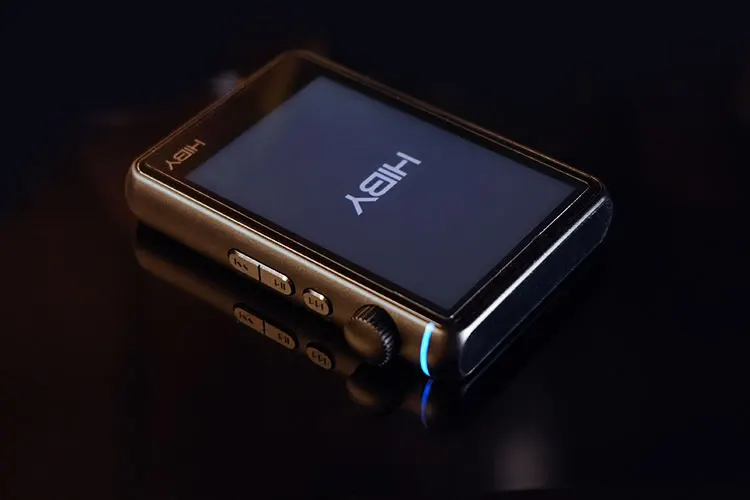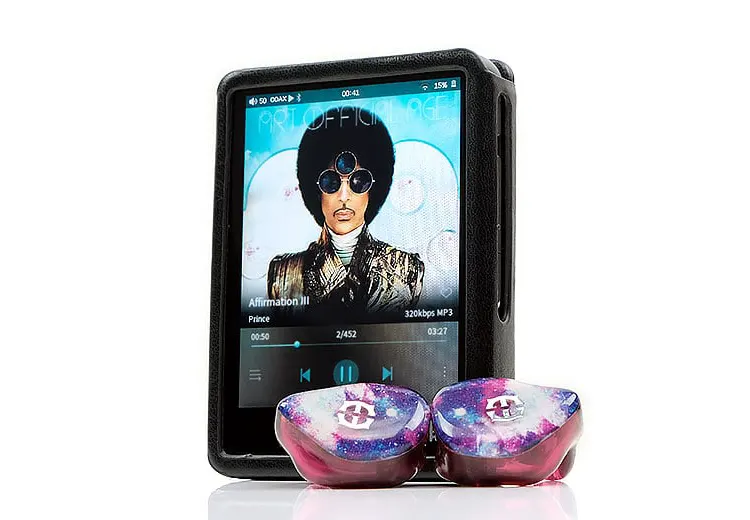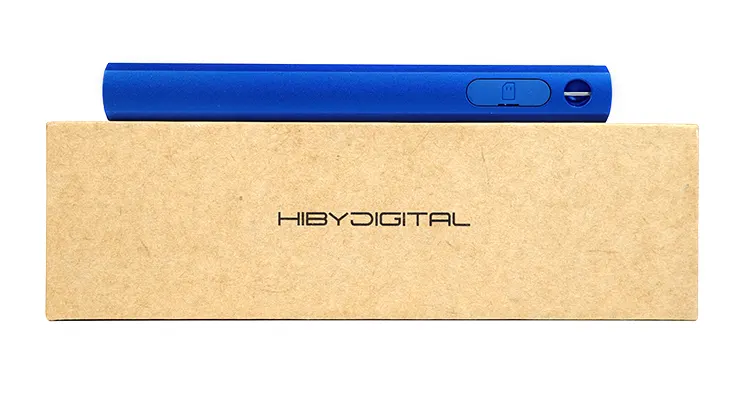Sound Impressions
The M300 was given approximately 50 hours of use before the testing and impressions were made. Use during the test was above 50 hours as well.
Impressions were garnered using the included HiBy Digital X0E for wired and the combination of iFi Audio GO pod tethering the Campfire Audio Supermoon.
Summary
Compared to the R3 Pro Saber, and R3 II, the M300 comes across as more neutral (when not utilizing the HiByMusic settings), and a bit thinner in signature. Dynamics were present, but not outstanding. Slightly W-shaped, the extremes never varied much from neutral.
When engaging either the plugins or in-app MSEB or parametric equalizer, the M300 shined. I openly prefer non-EQ’ed music and will rarely add or subtract anything to the music, but the plug-in options added to my enjoyment of the M300.
The M300 had me actively playing with the in-app settings searching for a “better” sound. When done properly, the M300 came across as smooth still, but with “tailored” detail retrieval.
Timbre
The M300 presents a neutral signature, that comes across as smooth, without peaks. Mids are elevated a bit, but not enough to cause any disassociation. Vocals come across with a certain amount of velvet, without becoming veiled.
Bass does not reach all that deep but also does not bleed into the mids. The upper reaches come across as competent, without too much sparkle and no sibilance. That lack of sparkle cost the M300 in detail retrieval, but the smooth character presented an even footing.
The X0E comes across with a bit of richness, without becoming tedious up top as well. The mid-range tends to shine on most IEMs used but became a bit harsh on the vibrant Supermoon.
The X0E did not, so this could be IEM-dependent. Sharper instruments or songs generated good sound due to the rolling off up top.
A lower reach in the bass was had using Tidal (either native or the designated app), while SD card music came across with less push, but equal in detail. There was an electronic feel to some cymbal treatment, which hindered realism in the music, though.
Staging & Dynamics
The soundstage was slightly out of head, with little lifting of the mids centrally. The left-right placing was very good as a result. There was a less-than-black background using the Supermoon, but not the X0E.
Many CFA models are known for this, so it should not be detrimental to the M300 sound character. There was a certain lack of depth to the soundstage, which could be countered when using the EFOtech USpatializer. Taken without any changes, it was still good.
As mentioned in the R3 II review, MSEB or the parametric equalizer can change these characteristics; as can the plugins. I preferred keeping the USpacializer on in stock settings for the majority of my listening.
The instrument layering was present, with good differentiation between placement and the melding of the music. Adding instruments caused the M300 to struggle a bit (like the R3 II), but considering its place in the lineup, this is a minor concern.
Complex music was competent but lacked dynamic range. The limitations of that smooth signature showed when called upon to replicate complex pieces.
Synergy
The M300 worked across many different IEMs. The black background from the X0E countered the better details wrung using the Supermoon, making the versatility of the M300 quite acceptable.
Music was of nearly equal quality using Tidal, Qobuz, or SD card music, showing versatility across platforms, except as mentioned above.
The power output, while not shattering records, showed it could be quite loud depending upon what IEM or genre played. When the song called for an increase in volume, the M300 obliged, giving a rather fun setup some needed energy.
Tidal’s preponderance for sub-bass shone through while using the Supermoon on the iFi GO Pod but felt more realistic on SD card music. The ability to tailor the HiByLink music app helped tame any potential misgivings while allowing the user full control of the sound signature.
Power
The 103mW may not seem like a lot, but when using the “media volume” setting, it acts almost like a gain slider. The volume became plenty loud, no matter which listening source I used.
Pairings
When paired with the provided X0E IEM, the sound came across with a certain amount of vibrancy to it, which was a pleasant surprise for an affordable IEM such as that. The duo could easily become a go-to for the gym, or workouts without bother.
The iFi GO Pod hooked to my custom Supermoon afforded an even better experience. With plenty of power through the M300 and GO Pod, the Supermoon sounded vibrant, but with a touch of sibilance, which was song-dependent.
I enjoyed the deeper-reaching bass and better detail, but this did not diminish my enjoyment of the X0E pairing.
Select Comparisons
HiBy R3 II
Since the introduction of the first-generation HiBy R3, it has seen several upgrades, including the R3 Pro in 2019 and the recent Sabre model at the end of last year.
Now, HiBy has unveiled a true 2nd generation version called the R3 II, which builds upon the clean design of its predecessors while introducing exciting new features, offering 16x unfold for MQA, a physical volume knob, as well as extended playback time of up to 15 hours.
With its versatility as a dongle and digital audio source, the R3 II is certainly feature-packed, earning it the nickname, “Music Treasure Box”.
Technical
The R3 II is equipped with a mid-tier dual ESS SABRE ES9219C DAC chipset. It supports decoding up to DSD256 and PCM up to 32BIT/384kHz, with the ability to output audio signals through its USB-C interface.
To enhance jitter control, the R3 II features two embedded oscillators clocked at 45.1584MHz and 49.152MHz. The 4.4mm balanced output delivers a maximum output of 380mW at a 32 ohm load, which is comparable to some mid-range DAPs and outperforms many dongles.
Its balanced output provides a more powerful output of 3.5 Vrms, while the 3.5mm single-ended output reaches a maximum of 1.9 Vrms and 112 mW on a 32Ω load.
The dynamic range averages 115dB, and the signal-to-noise ratio is 119dB for both outputs. Notably, the separation is 74 dB on the single-ended output and 103 dB on the balanced output, as per official information.
Design
The R3 II takes design inspiration from the earlier R3 Pro, featuring an aluminum frame, helping contribute to the lightweight construction, weighing just 118g and measuring 86.9×60.6×14.5mm.
It incorporates a bit rate indicator on the side and a prominent volume knob that also serves as the on/off button. The indicator bar on the R3 II remains illuminated at all times and changes color to indicate different sampling rates during playback, enhancing the device’s aesthetic appeal.
The top of the device features a 3.2″ 320*480 touch panel, which, although not very dense in terms of pixel density by today’s standards, is sufficient for music playback.
The back of the device is covered with a curved piece of glass. Despite its lightweight design, the R3 II manages to incorporate a 2000mAh battery, providing a playback time of 16 hours.
Performance
The R3 II is tuned on the safer side with a rounded upper end, without becoming too sharp as a result. It sounds rather M-shaped with the paired IEMs I used, suiting many genres with adequate dynamics and decent noise control. It also has some nicely elaborated vocal harmonics.
I recommend using the MSEB tuning panel to achieve better clarity and openness when utilizing SD card music, especially with IEMs that have a richer tonality to them. I did use it with the Supermoon as well as the X0E.
In the drop-down menu, you can select L/H gain level. Using high gain with the 4.4mm output provided a better vocal response, as expected. James, (review of the R3 II), and I can both agree on this.
While the 3.5mm output provides less power, the sound was comparable to the M300, but warmer and richer. This comes down to what signature you prefer: smooth for the M300 versus richer and warmer for the R3 II.
HiBy R3 Pro Saber
One of my favorite small DAPs, the R3 Pro Saber is my constant companion while I mow our acreage. Sometimes I do wish for a larger lot, so I could spend more time with this little gem of a DAP.
With plenty of power, and the ability to stream within the excellent HiByLink app, the R3 Pro Saber provides plenty of power in a diminutive package.
Technical
The original R3 Pro used Cirrus Logic chips, while the new Saber uses a dual ESS9218 chipset. The Saber version (non-2022) provides 280mW through the 2.5mm balanced jack and 80mW through the 3.5mm single-ended jack.
Much like the M300 though, that “minimal” power rating is deceiving and can fully drive a moderately rated 3.5mm jacked IEM. The change to the ESS chipset helps “overcome” the power shortfall. I have no issue while using it in a noisy situation, providing plenty of power.
Using the familiar HiBy OS, the Saber includes the HiByLink music app, with native Tidal streaming from within. Very similar to the M300, this allows the Saber to perform admirably for close to 17 hours. Bluetooth 5.0 comes standard, with quick connectivity.
Design
The R3 Pro Saber features an aluminum frame helping contribute to the lightweight construction, measuring just 82x61x13mm with a weight of 116g.
A 3.2” touch screen with a pixel density of 360×480 highlights pretty much the full front of the unit. With no other system besides the native HiByLink music format, the screen reaction was still positive even with the small size of the font.
The curved edges and glass front & back make a case a necessity to me, and luckily the included leather case allows for protection and ease of use. The micro-SD slot is covered with the case, but not the USB-C charging port.
Performance
Similar to the R5 Pro Saber in sound, the R3 Pro Saber provides a warm, rich signature, which varies markedly from the M300.
Smooth while presenting a richer, more laidback signature, the clarity of music coming out of the Saber can be fine-tuned much like the M300. Leaving all neutral, without MSEB or EQ help, the signature may be too warm for some, but there is not a lack of clarity coming out of this small device.
Having a balanced jack affords a more voluminous soundstage in all dimensions from the M300 (without the USpatializer), but detail retrieval is not lost.
The warmer signature allows for a thickness of notes (but not too slow) that the M300 cannot match unless you delve into the MSEB or EQ settings. From a strictly neutral standpoint without changing the settings, the Saber is a step up for me.
The Saber was such that after hearing a fellow reviewers, I purchased my own to replace my then-small DAP, the Shanling M3s (but I kept the Shanling M2x).
Residing in the same price point as the M300, this can come down to a newer device, with newer technology and downloadable apps for use. There is a lot to be said for that.
Our Verdict
When listening to the HiBy Digital M300 through a variety of listening sources, I found myself having to adjust my expectations.
Not because this was an entry-level media player, but because it should be judged on its own merits. The R-series is pure audio, the M300 widens it to beyond music to general media.
In that regard, the M300 is a very fine-performing player. The touch screen functions properly, and the 4” size is just enough to allow the user an operable surface.
The audio side certainly benefits from MSEB, EQ, or parametric EQ settings, but that to me only makes the M300 better. Importing your favorite EQ settings can be done as well and customizable options make the M300 perform well across your music sources.
The more I listened to the M300, the more I appreciated its multi-functional capabilities for media in general. Android 13 is top-notch, and the ability to tailor your settings as noted above helps personalize the media experience.
It isn’t the most powerful, nor feature-laden DAP, but it is still worth a look as an affordable media player, or the one which you can carry with you to the gym or when you want something a bit extra. This is a very nice portable device.
HiBy Digital M300 Technical Specifications
- Max voltage swing: 1.81 Vrms
- Rated Voltage Swing: 1.4 Vrms
- Dynamic Range: 119dB
- SNR: 120dB
- Max Output Power: 103mW
- Distortion At Optimum Volume: 0.001%
- Noise Floor: 1µV
- Frequency Range: 20-80kHz
- Dimensions: 113mm x 58mm x 13mm
- Weight: 136g
- Screen Size: 4”
- Screen Resolution: 1280 x 640




